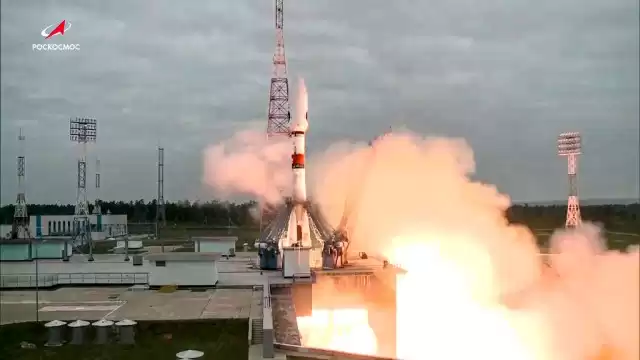Russia Luna-25 spacecraft crashes moon
Russia's robotic spacecraft, Luna-25, crashed while attempting to land near the moon's south pole, losing the race to India.
Russia's ambitious attempt to land a robotic spacecraft near the moon's south pole has ended in failure, as the Luna-25 crashed during its landing. This setback comes as India's Chandrayaan-3 spacecraft is currently orbiting the moon and is expected to make a landing near the pole this week. The race to reach this region has become highly competitive, with countries like the US and China also eyeing the lunar south pole for its potential resources, particularly water ice.
The Russian space agency, Roscosmos, announced that the Luna-25 spun into an uncontrolled orbit and ultimately collided with the moon's surface, leading to its destruction. Communication with the spacecraft was lost on Saturday, marking a disappointing outcome for Moscow's attempt to return to the moon after almost 50 years since the last Soviet mission. Roscosmos cited preliminary investigation results in their statement.
This failure adds to a series of setbacks for Roscosmos, as their launch-service revenue from foreign satellite operators was cut off due to Moscow's invasion of Ukraine in 2022. The Luna-25 was scheduled to land on the moon's south pole as early as Monday, but it was unable to enter its designated pre-landing orbit, according to Roscosmos.
The lunar south pole has garnered significant interest from space-faring nations due to the presence of water ice in craters in the region. This valuable resource could potentially be used for future lunar exploration and even as a source of rocket fuel. The US and China, along with Russia and India, are vying to be the first to tap into this potential.
By naming their new mission Luna-25, Roscosmos aimed to connect it to the Soviet space program's past achievements. The Soviet Union's Luna program, which took place between 1958 and 1976, attempted nearly 50 missions, with only 17 of them being successful. Luna-2 became the first spacecraft to reach the moon's surface in 1959, while Luna-3 captured the first images from the far side of the moon.
Roscosmos highlighted that Luna-25 is distinct from its predecessors, as it is venturing into the lunar south pole region, which poses more complex terrain challenges. In contrast, the Soviet-era spacecraft landed near the moon's equator. Meanwhile, India's Chandrayaan-3 mission, which includes a lunar rover, is set for a landing attempt this week. India's previous moon mission, Chandrayaan-2, ended in a crash near the lunar south pole in 2019.
The competition to explore the moon's south pole continues to heat up, with each country striving to make significant advancements in lunar exploration and potentially unlock the moon's untapped resources. While Russia's Luna-25 suffered a setback, the race is far from over, and the world eagerly awaits the next chapter in lunar exploration.












Comments on Russia Luna-25 spacecraft crashes moon